Riding a bike that doesn’t fit is no fun. It’s uncomfortable and you risk injury from being too cramped or too stretched out, but knowing what size bike you should buy can be a bit of a minefield. So here’s some advice to help you find the right size road bike.
Finding the right bike starts with the frame shape – traditional, semi-compact or compact – and size.
Two bike models of the same stated size can also result in very different positions, so it’s well worth reading up on the key numbers that affect road bike geometry, what they mean, and how they affect fit and handling to ensure you're buying the best road bike for your needs.
Getting a good fit means more than just having the right size frame. It also means your bike fits at all the main contact points: saddle, handlebar and pedals. Have a read of our guide to finding the perfect road bike position.
Beyond the main contact points, standover is also important. You need to be able to place both feet flat on the floor with at least one centimetre to spare at your crotch when standing astride the top tube.
Of course, we’re not all the same shape and size, so use the information below as both a starting point and a guide. Once you’ve found the right size bike and got your position close, you can make smaller adjustments to fine-tune the fit. You’ll be able to get bike fit advice in person from a bike shop.
We also recommend taking any bikes you are considering buying for a test ride to gauge how they feel in action. You want to make sure you’re comfortable on a bike and check its handling.
You should also make sure there’s enough range of adjustment for you to tweak the fit once you’ve bought the bike. Once again, a reputable bike shop should be able to offer impartial advice, and you can also read our guide on how to buy a bike.
Road bike size chart
Use the chart below for a rough guide on the frame size to go for. Again, we’d emphasise that this is a guide and should be used as a starting point. If you’re unsure, seek further advice from your local bike shop.
| Rider height | Frame size | ||
|---|---|---|---|
| Feet and inches | Centimetres | Effective top tube (cm) | Bike size |
| 4ft 10in – 5ft | 148-152 | 47-48 | XXS |
| 5ft – 5ft 3in | 152-160 | 49-50 | XS |
| 5ft 3in – 5ft 6in | 160-168 | 51- 3 | S |
| 5ft 6in – 5ft 9in | 168-175 | 54-55 | M |
| 5ft 9in – 6ft | 175-183 | 56-58 | L |
| 6ft – 6ft 3in | 183-191 | 58-60 | XL |
| 6ft 3in – 6ft 6in | 191-198 | 61-63 | XXL |
Manufacturers’ size guidelines
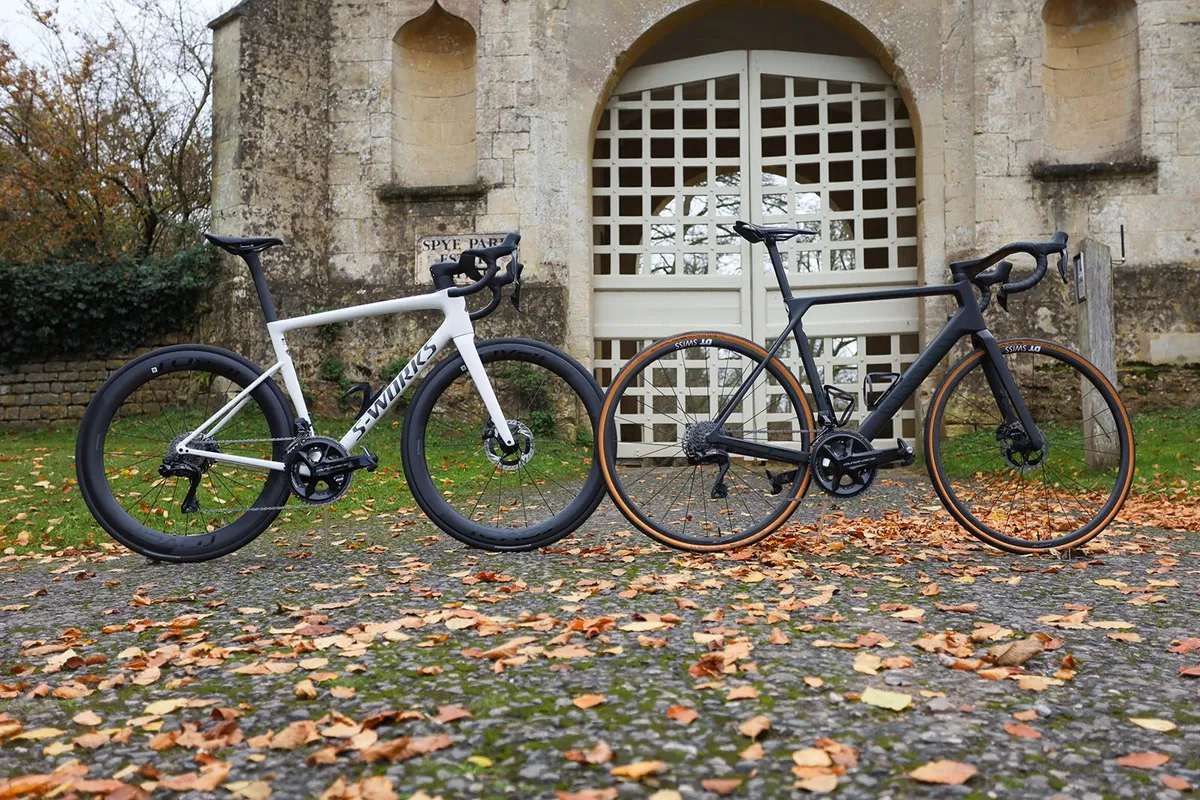
The simplest way to determine what size bicycle to go for is to use the guidelines bicycle manufacturers typically provide, which correlate various height ranges with different bike sizes.
However, as we’ve already alluded to, there are no standard sizes between bicycle manufacturers. Each will have its own approach to bike design, so it’s useful to have an overall understanding of bike geometry.
How one brand sizes its bikes may be very different from another, so don't assume one model has the same fit as another, even if the stated size is seemingly the same.

Many manufacturers size road bikes by seat tube length (or a nominal seat tube length that imagines the bike has a horizontal top tube, even if it doesn't). Mountain bikes are usually sized as S, M, L, etc. That’s also a system used for some road bikes. Confusing, eh?
Most bike makers will also quote stack and reach figures for their bikes because they are a useful way of comparing bike sizes and geometry between brands.
The advantage of using these figures is they are independent of frame angles – two frames might have different top tube lengths, but the same reach, with a difference in angles making up the difference.
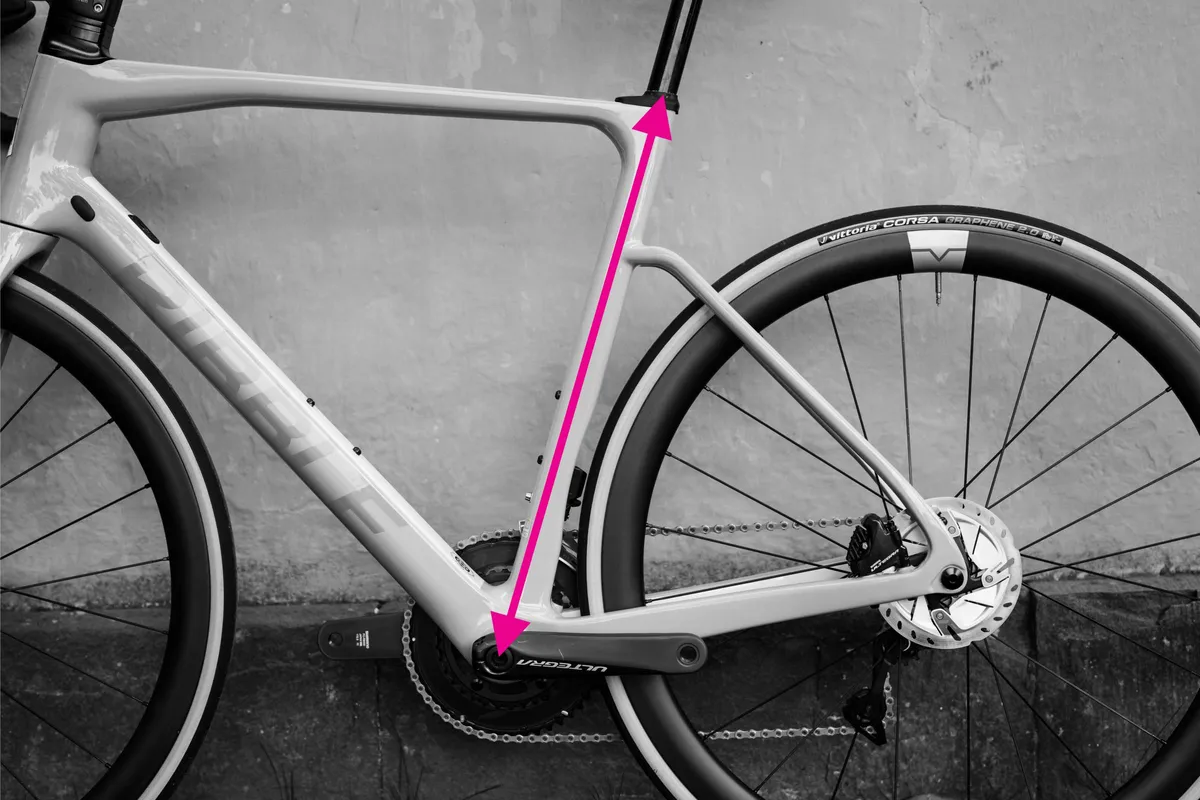
If you’re planning to buy a bike on the internet, it’s even more important to make sure you’ve got your size right. Many web-sales brands will suggest a bike size based on your height and a few other measurements.
That might be fine if your build is pretty average and you’re in the middle of a suggested height range, but if you’re an outlier, we’d strongly recommend a bike fit and a test ride to make sure you buy the right size.
Anatomy of the bicycle frame
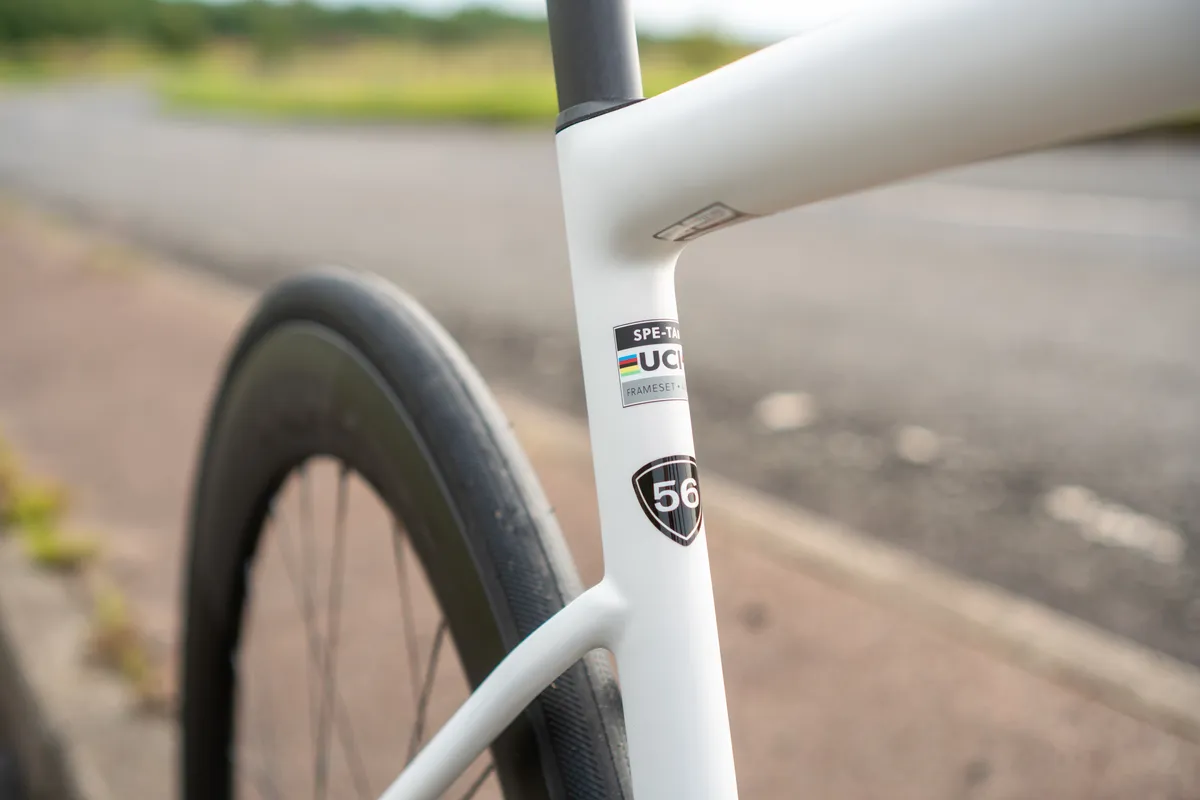
Bike manufacturers will usually list the measurements for each element of a bike’s geometry, so knowing what each measurement refers to is the first step.
Use the diagram below to help identify the different tubes used on the frame of a road bike.
Seat tube length is often used to denote size, but top tube length is the more important number for establishing the right fit.
However, it's also worth noting that two top tube lengths may be quoted on a bike's geometry chart: the length of the tube itself and the effective top tube, which concerns bikes that have a sloping top tube (road bikes with a semi-compact or compact geometry).
We'll take a closer look at that next.
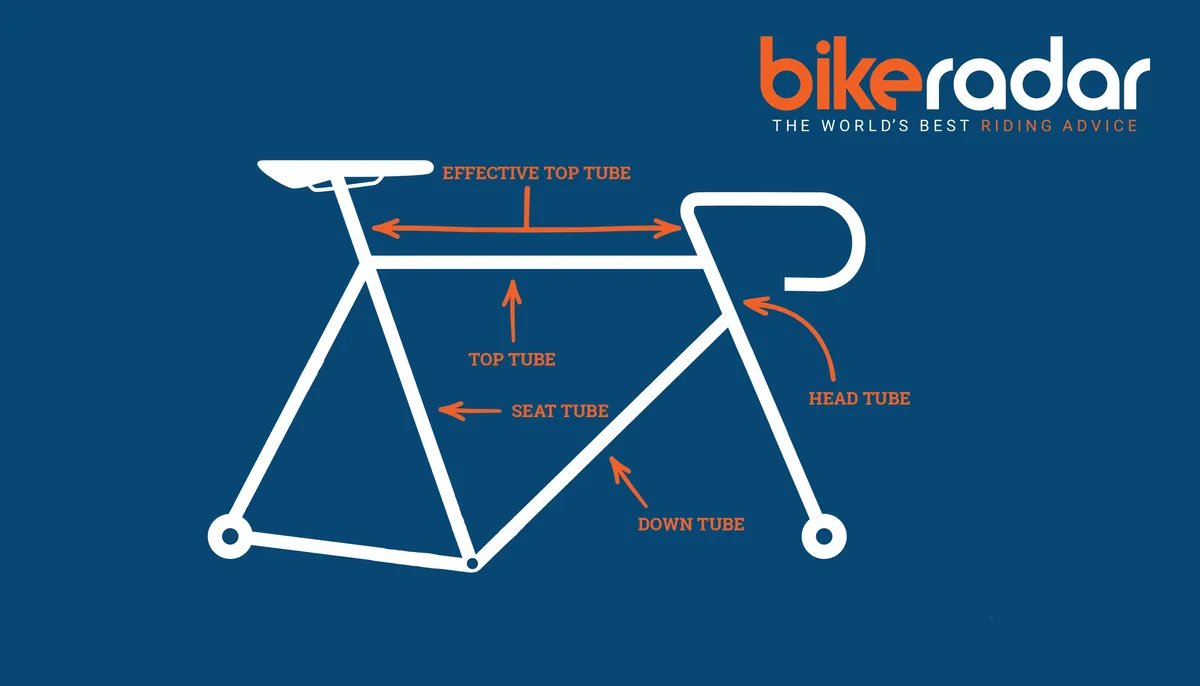
Frame geometries: traditional, semi-compact and compact
There are three main geometries of frame to consider when buying your first bike: traditional, semi-compact and compact.
Traditional bicycle frame
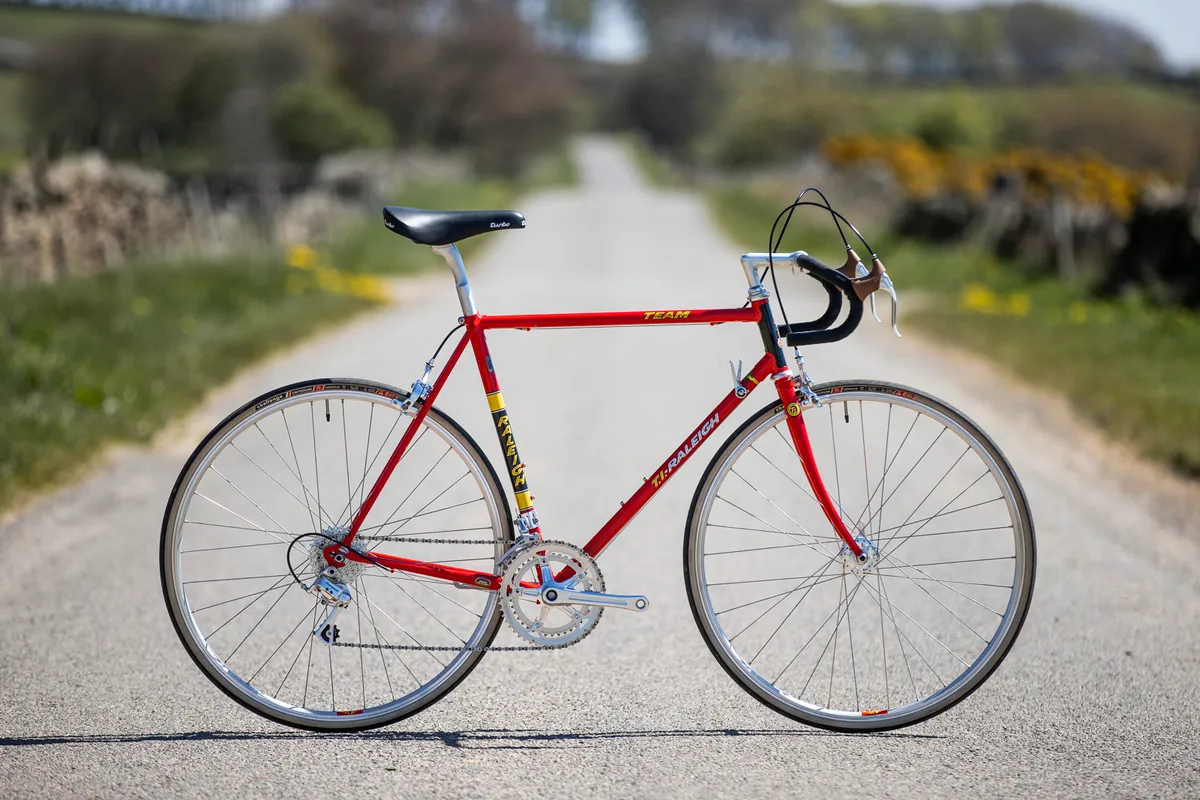
Traditional frames are characterised by a top tube that runs parallel to the ground. There is a reduced space when standing over the bike, though, so sizing can be more critical here.
Such frames were popular in the past, as you’d expect, but it’s much more common to see compact or semi-compact frames on the latest bikes.
Compact bicycle frames
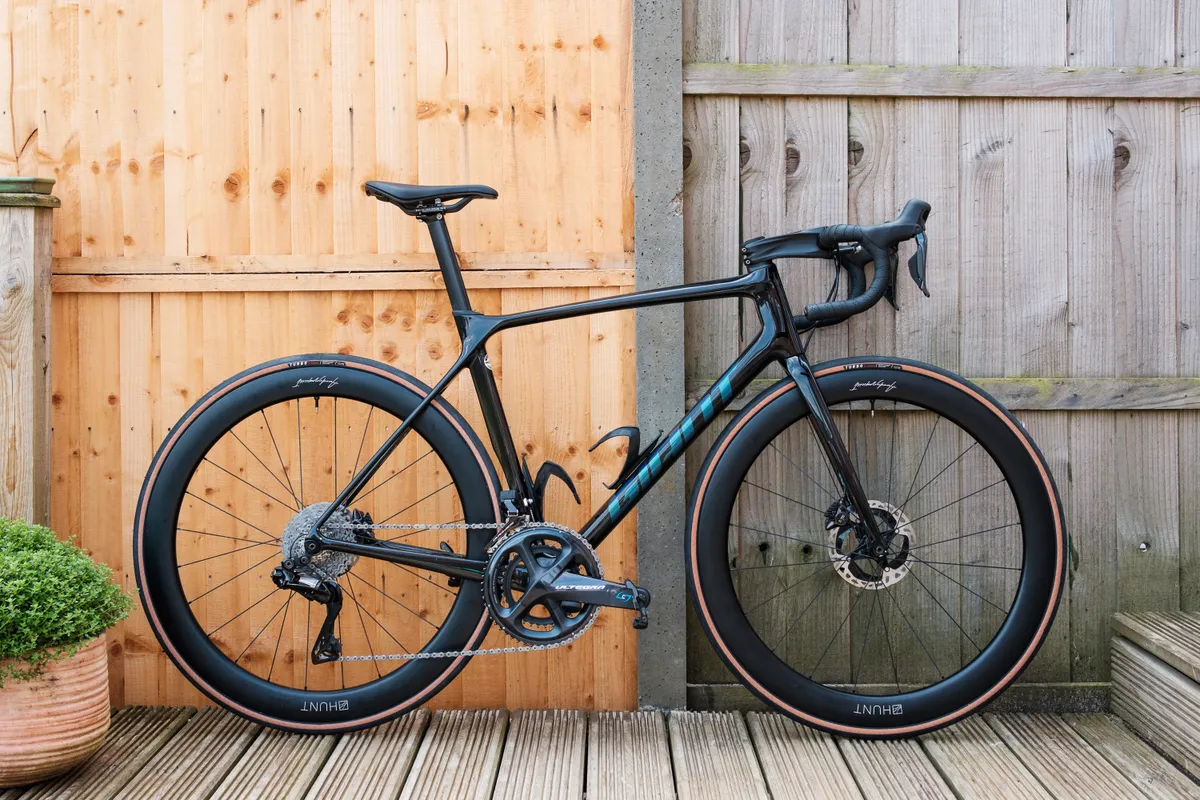
Compact geometry frames are characterised by a sloping top tube, shorter wheelbase and smaller rear triangle of the frame. The result is more standover clearance than a traditional-geometry frame and possibly a stiffer, more responsive ride.
Giant introduced the compact frame shape with the launch of the TCR (which stands for Total Compact Road), and compact or semi-compact designs are now ubiquitous across the latest road bikes.
With the sloping top tube, expect to see an extra two to three inches of seatpost showing when compared to traditional bikes with a horizontal top tube.
Semi-compact bicycle frames
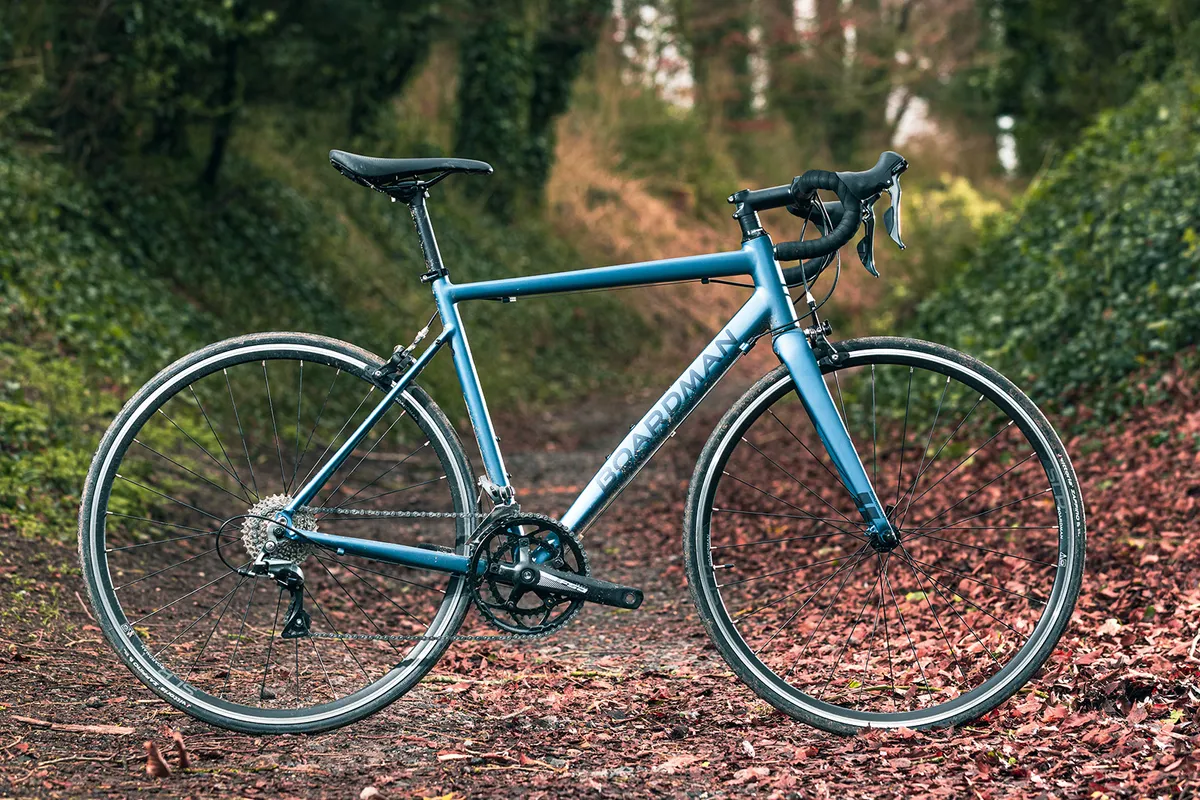
Semi-compact geometry is similar to compact, with the only difference being that the sloping angle of the top tube is not as great, so the standover clearance is reduced and the effective top tube distance is slightly longer.
The difference between a semi-compact and compact frame will often be quite subtle, though.
Top tube length
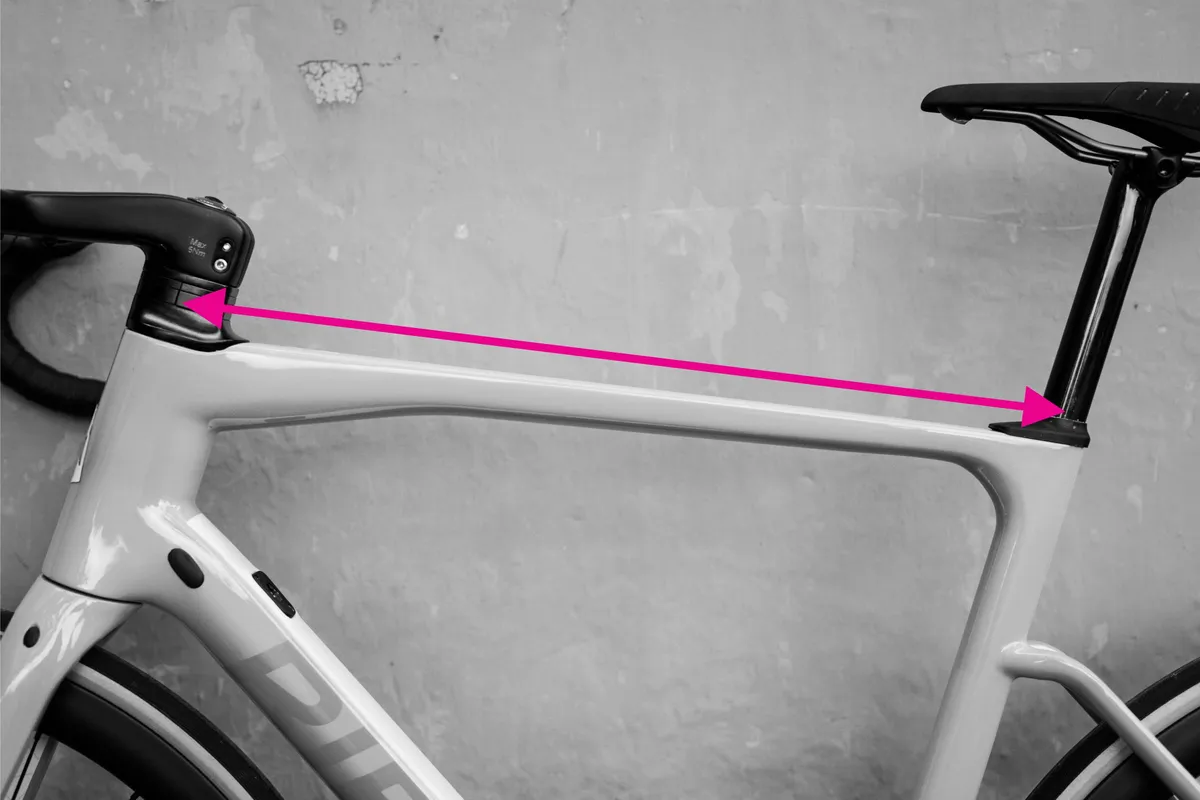
The most important consideration to make as you decide which frame to go for is the effective top tube length: the distance from the head tube to the seatpost on a bike with a sloping top tube, or simply the length of the top tube on a road bike with traditional geometry.
If the top tube is too long, you’ll be overreaching to the handlebars, and your riding position will likely be more aggressive, which could be uncomfortable on longer rides.
If you’re looking for a more comfortable riding position, you may wish to go for a shorter effective top tube length.
